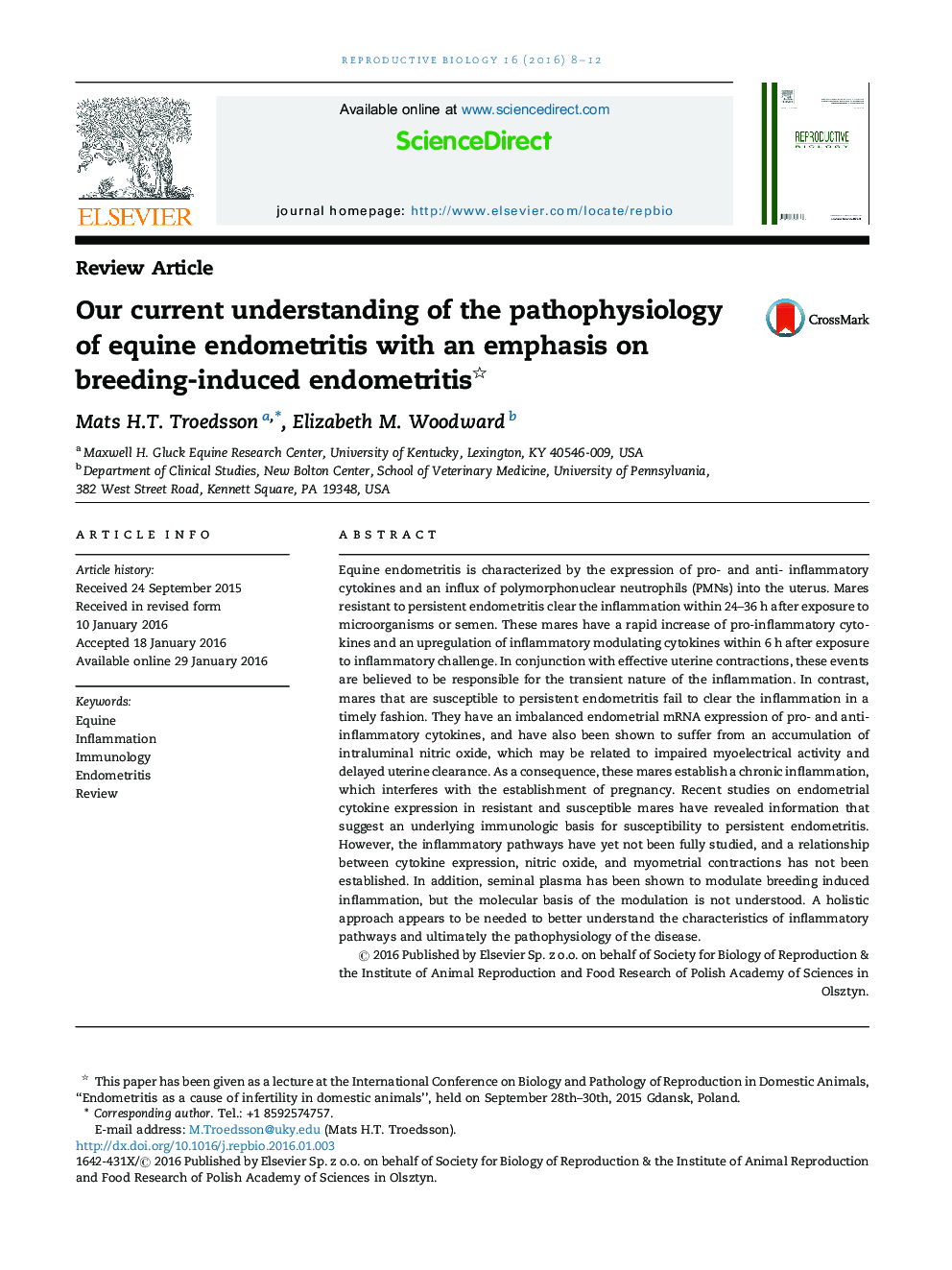| کد مقاله | کد نشریه | سال انتشار | مقاله انگلیسی | نسخه تمام متن |
|---|---|---|---|---|
| 2062358 | 1076601 | 2016 | 5 صفحه PDF | دانلود رایگان |
Equine endometritis is characterized by the expression of pro- and anti- inflammatory cytokines and an influx of polymorphonuclear neutrophils (PMNs) into the uterus. Mares resistant to persistent endometritis clear the inflammation within 24–36 h after exposure to microorganisms or semen. These mares have a rapid increase of pro-inflammatory cytokines and an upregulation of inflammatory modulating cytokines within 6 h after exposure to inflammatory challenge. In conjunction with effective uterine contractions, these events are believed to be responsible for the transient nature of the inflammation. In contrast, mares that are susceptible to persistent endometritis fail to clear the inflammation in a timely fashion. They have an imbalanced endometrial mRNA expression of pro- and anti-inflammatory cytokines, and have also been shown to suffer from an accumulation of intraluminal nitric oxide, which may be related to impaired myoelectrical activity and delayed uterine clearance. As a consequence, these mares establish a chronic inflammation, which interferes with the establishment of pregnancy. Recent studies on endometrial cytokine expression in resistant and susceptible mares have revealed information that suggest an underlying immunologic basis for susceptibility to persistent endometritis. However, the inflammatory pathways have yet not been fully studied, and a relationship between cytokine expression, nitric oxide, and myometrial contractions has not been established. In addition, seminal plasma has been shown to modulate breeding induced inflammation, but the molecular basis of the modulation is not understood. A holistic approach appears to be needed to better understand the characteristics of inflammatory pathways and ultimately the pathophysiology of the disease.
Journal: Reproductive Biology - Volume 16, Issue 1, March 2016, Pages 8–12
